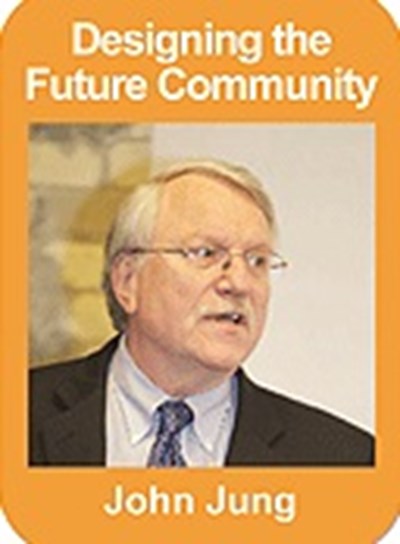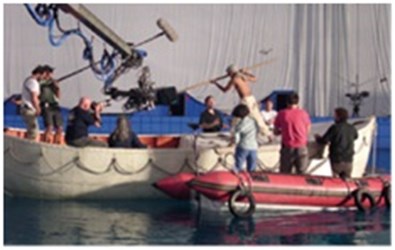
Recently, as I watched the image of Life of Pi director Ang Lee walk up to the podium to accept his Oscar, I had no idea that this absolutely fascinating eye candy of a movie was produced in Taiwan. When he mentioned in his acceptance speech that he thanked his homeland of Taiwan and specifically the people of Taichung, I recalled that Mayor Jason Huhad told me about his association with the famous director when we met in Taichung last April, but I never connected the dots when I saw the movie. Why would I? Isn’t everything produced in Hollywood? Ok, maybe London, Toronto or maybe one of the other megacity locations such as Sydney or Mumbai. But Taichung?
According to a report in the Taiwan Review, the Director General of the Taichung City Government’s Information Bureau, Jean Shih, provided an insight into why Ang Lee chose to make the movie in Taichung, in central Taiwan, over other global locations. Taichung’s Mayor is an old friend of Ang Lee, personally inviting him to shoot the film in his city, making the decommissioned Shuinan Airport near the city’s center available for the film, a location that needed work but was good enough to become the center for the filming of the movie. Shih admits that some of the filming did take place in India, but the majority of the movie was eventually shot in Taichung, Taipei and Pingtung.
But it required much leadership, as Mayor Hu personally coordinated efforts to attract Lee’s American film crew to come for fact-finding tours to assess Taichung’s moviemaking environment. According to the Taiwan Review, these efforts resulted in Taichung city government joining forces with the central government to offer the director subsidies of more than $9.5 US million to film the movie in Taichung. This was good enough to result in 250 technicians and artists to work on an award-winning movie, but more importantly leaving a legacy for Taichung and Taiwan in the ever-growing race for content, creative industries, talent and financial deals that today could potentially be located anywhere.
Yes, megacities attract talent, financial opportunities and grow clusters, but megacities are also big, difficult to maneuver, penetrate and take advantage of; some would even call them impersonal and anonymous, so that it’s often much easier to build relationships and take advantage of connections and opportunities in smaller regions or in regions where initiatives become individually more important in order to be able to get things done. Places like Taichung may not have the dazzle of filming megacities like LA and London, but are good alternatives since they are highly agile, high-velocity locations. Add the elements of Intelligent Community into the mix and it gets very interesting indeed.
Recently I hosted Mr. Suneet Singh Tuli, who is nearly single-handedly impacting mass education in India by having developed a tablet that will provide 250 Million students in India with the tools to learn from teachers from around the world, connect by phone and email as well as use applications to be creative and share these with other students throughout their region and around the world. He is not running with the big “800 pound gorillas” as he calls them. He is a small firm, originally from Brampton Ontario, that punches above their weight. His tablet can be made for $35 and he sells it for $40 to the Indian government. It is affordable and is a pretty good smart application, similar to the original iPad and iPhones, which originally sold for hundreds of dollars. These iPads and iPods at their astronomical prices would not have been able to be sold to the masses in India when they first came out.
But Tuli’s Aashtak Tablet sells for a very affordable $40 and is being gobbled up by the politicians in India and in many other countries around the world. Mr Tuli’s goal is to bring a suitable, “frugal” tool that can be accepted and easily made available to the next 3 Billion end users. It may not be the excellence displayed in the latest Apple iPhone 5, nor the next Samsung Android, but for the masses, as he says, “it is simply good enough”. In fact, it is more than “good enough”, but not when you compare it with the flash and brilliance of the newest Blackberry Z10. But that is not his goal. Instead his goal is to get these tools into the hands of millions who can use the Aashtak Tablet: this will be their salvation; their gateway to education and to a promise of a better life.
Mr Tuli’s lesson here for me was to understand that not everyone needs, wants or must have the latest, dazzling and super-dooper smartphone in order to meet their goals and to be able to do something hugely impactful. This has and will in the fullness of time demonstrate that “good enough” is absolutely just right and has been able to execute the necessary tipping point to achieve good works; in fact, it even may be able to create excellence.
Similarly, Mr. Ang Lee was able to excel in his work, the Life of Pi by going to a non-Hollywood location and in an environment that would be considered by all measures, “good enough”. He was able to not only create a brilliant masterpiece from this exercise, but made a huge impact and created a legacy for the lives of his homeland and the citizens of Taichung.
From this point onwards, a location and facility considered initially good enough, has an excellent chance now to transform into a center of excellence.
This article is quoted from Intelligent Community Forum blog, written by Mr.Johun Jung, April 29, 2013.
https://www.intelligentcommunity.org/index.php?submenu=News&src=blog

 Facebook
Facebook
 Twitter
Twitter
 LINE
LINE


